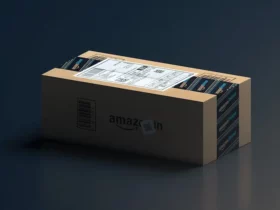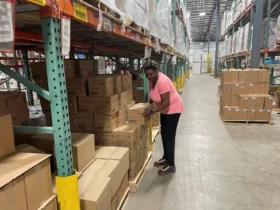Selling on Amazon as an individual can be a great way to start a business or make some extra income. With an individual account, you can list your products on Amazon’s marketplace and reach millions of customers worldwide. However, it’s important to understand the costs and limitations associated with this type of account.
To start selling on Amazon as an individual, you’ll need to create an account and pay a commission of $0.99 for every sale you make. There are also additional referral fees and variable closing fees that apply to each transaction. While individual sellers don’t have access to some of the tools and reports available to professional sellers, they can still benefit from Amazon’s vast customer base and fulfillment services.
If you’re considering selling on Amazon as an individual, it’s important to do your research and understand the costs and benefits. With the right strategy and products, selling on Amazon can be a lucrative opportunity for individuals looking to start or grow their business.
Understanding Amazon Marketplace
As an individual seller, understanding Amazon Marketplace is crucial for success. Amazon Marketplace is a platform for third-party sellers to sell their products alongside Amazon’s own products. It is a competitive and dynamic marketplace that offers sellers access to millions of customers worldwide.
Selling on Amazon Marketplace is a great way to reach a large audience and grow your business. However, it is important to understand the rules and regulations that come with selling on Amazon. Amazon has strict policies to ensure that all sellers are providing high-quality products and excellent customer service.
When you sell on Amazon Marketplace, you have two options: Individual or Professional selling plans. The Individual plan is suitable for small-scale sellers with limited inventory, while the Professional plan is for those with a larger inventory. The Individual plan charges a fee of $0.99 per item sold, plus referral fees, while the Professional plan charges a monthly subscription fee of $39.99, plus referral fees.
As an Amazon seller, you have access to a range of tools and services to help you manage your business. These include:
- Inventory management tools to help you keep track of your stock levels and sales.
- Advertising services to help you promote your products and reach more customers.
- Promotional campaigns to help you boost your sales during peak periods.
- Bulk listing tools to help you create and manage your product listings more efficiently.
- Shipping tools to help you set your shipping rates and manage your orders.
In addition to these tools, Amazon also provides sellers with access to comprehensive inventory reports, allowing you to track your sales and monitor your performance. You can also sell restricted products or items in restricted categories, provided you meet the necessary requirements.
Overall, Amazon Marketplace is a great platform for individual sellers to reach a large audience and grow their business. By understanding the rules and regulations, and utilizing the tools and services available, you can succeed as an Amazon seller and reach your business goals.
Choosing Your Selling Plan
When it comes to selling on Amazon as an individual, you have two main options: the Individual Plan and the Professional Plan. The choice you make will depend on your business needs and how many items you plan to sell each month.
The Individual Plan is a great option for those who are just starting out or only plan to sell a few items per month. With this plan, you will pay a fee of $0.99 per sale, and there is no monthly fee. This plan is ideal if you are testing the waters or have a small number of items to sell.
On the other hand, the Professional Plan is best for those who plan to sell more than 40 items per month. With this plan, you will pay a monthly fee of $39.99, regardless of how many items you sell. This plan is ideal if you are looking to grow your business and sell a larger number of items.
One of the benefits of the Professional Plan is that it comes with additional features, such as the ability to create listings in bulk and access to Amazon’s advertising tools. This can help you reach a larger audience and increase your sales.
When choosing your selling plan, it’s important to consider your business needs and goals. If you are just starting out or have a small number of items to sell, the Individual Plan may be the best option for you. However, if you are looking to grow your business and sell a larger number of items, the Professional Plan may be a better fit.
It’s also important to note that you can switch between plans at any time. So if you start with the Individual Plan and find that you are selling more items than expected, you can easily upgrade to the Professional Plan.
Creating Your Amazon Seller Account
To start selling on Amazon as an individual, the first step is to create an Amazon seller account. The registration process is straightforward and can be completed in a few simple steps.
First, I need to provide my legal name and business name (if applicable) during the registration process. It’s essential to ensure that the names I provide match the names on my government-issued ID and bank account.
Next, I need to provide a phone number and address where I can be reached. Amazon will use this information to verify my account and to send important notifications regarding my sales.
I also need to provide my bank account and credit card information. Amazon will use this information to deposit my sales proceeds and to charge any fees associated with selling on their platform.
Additionally, I need to provide my tax identity information, such as my social security number or employer identification number. This information is required by law for tax purposes.
Finally, I need to provide a government ID to verify my identity. Amazon accepts a variety of government-issued IDs, including driver’s licenses and passports.
Once I have completed the registration process and my account has been verified, I can start listing my products and selling on Amazon as an individual seller.
Listing Your Products
Once you have set up your Amazon seller account, you can start listing your products for sale. Whether you are selling a new product or an existing one, the process is straightforward.
To list a new product, you will need to provide a product title, description, and images. It is important to make sure that your product listing is accurate and detailed, as this will help customers make an informed purchase decision.
When listing your product, you will also need to select the appropriate product category. Amazon has a wide range of product categories, including restricted categories for certain types of products. It is important to ensure that your product falls within the appropriate category and that you comply with any category-specific requirements.
If you are listing an existing product, you can search for the product in Amazon’s catalog and create a new listing or add your offer to an existing listing. It is important to make sure that your offer matches the existing listing in terms of condition, price, and other details.
Keep in mind that certain products and categories may be restricted on Amazon. For example, some Amazon device accessories and cell phones may require approval before they can be listed for sale. It is important to check Amazon’s policies and guidelines to ensure that you comply with all requirements.
In conclusion, listing your products on Amazon is a simple process that requires accurate and detailed information. By following Amazon’s guidelines and policies, you can ensure that your products are listed correctly and reach a wider audience of potential customers.
Understanding Amazon’s Fees
As an individual seller on Amazon, it’s important to understand the various fees associated with selling on the platform. Here’s a breakdown of the fees you can expect to encounter:
Selling Fees
As an individual seller, you’ll be charged a referral fee for each item sold. The amount of the fee varies depending on the product category, but most referral fees fall between 8% and 15%. Additionally, you’ll be charged a variable closing fee for media items like books, music, and videos.
FBA Fees
If you choose to use Amazon’s Fulfillment by Amazon (FBA) service, you’ll be charged additional fees for storing and fulfilling your products. These fees vary depending on the size and weight of your products, as well as the time of year.
Fulfillment Fees
If you choose to fulfill orders yourself, you’ll still be charged a fulfillment fee for each item sold. This fee covers the cost of picking, packing, and shipping the item to the customer.
Shipping Fees
You’ll also need to consider the cost of shipping your products to Amazon’s fulfillment centers or directly to customers. Amazon offers discounted shipping rates through their partnership with carriers like UPS and FedEx.
Overall, it’s important to carefully consider all of the fees associated with selling on Amazon before getting started. While the fees can add up quickly, the platform offers a huge potential customer base and can be a great way to grow your business.
Utilizing Fulfillment by Amazon
As an individual seller on Amazon, you have the option to use Fulfillment by Amazon (FBA) to help streamline your business. FBA can take care of the storage, packing, and shipping of your products, as well as handling returns and exchanges. This can save you time and effort, allowing you to focus on other aspects of your business.
To get started with FBA, you will need to create your Amazon selling account and set up FBA in Seller Central. Once you have done this, you can add your products to the Amazon catalog and specify FBA inventory. When a customer places an order, Amazon will take care of the rest, including inbound shipping of your products to their fulfillment centers.
One of the benefits of using FBA is that your products become eligible for Amazon Prime, which can increase your visibility and sales. Additionally, FBA offers discounted shipping rates, which can save you money and make your products more competitive.
It is important to keep track of your inventory levels when using FBA. Amazon will notify you when your inventory is running low, but it is up to you to replenish your stock. You will also need to pay storage fees for your products, so it is important to manage your inventory efficiently.
Overall, utilizing FBA can be a great option for individual sellers on Amazon. It can help decrease fulfillment headaches and improve customer satisfaction. By taking advantage of FBA, you can focus on growing your business and expanding your product offerings.
Scaling Your Business
As an individual seller on Amazon, scaling your business can seem like a daunting task. However, with the right strategies, it is possible to increase your sales and revenue without putting in a lot of extra work. Here are some tips for scaling your business on Amazon:
- Utilize advanced selling tools: Amazon offers a variety of tools to help you manage your inventory, analyze your sales data, and optimize your listings. By using these tools, you can streamline your operations and make data-driven decisions to improve your sales.
- Automate your pricing: One of the biggest challenges for individual sellers on Amazon is pricing their products competitively. However, with automated pricing tools, you can set your prices to adjust automatically based on market conditions, helping you stay competitive without constantly monitoring your prices.
- Consider upgrading to a professional seller account: While individual seller accounts are great for getting started on Amazon, upgrading to a professional seller account can give you access to more advanced selling tools and features, as well as lower fees for high-volume sellers.
- Focus on increasing your sales: Ultimately, the key to scaling your business on Amazon is to increase your sales. This can be done through a variety of strategies, such as optimizing your listings, running promotions and deals, and expanding your product offerings.
By implementing these strategies, I have been able to successfully scale my business on Amazon and increase my sales and revenue. With a little effort and the right tools, any new seller can do the same.
Enhancing Product Visibility
As an individual seller on Amazon, it’s important to enhance your product visibility to attract more customers and increase your sales. Here are some tips and tricks that I have found useful:
Utilize Amazon Ads
Amazon Ads is a powerful tool that can help you increase your product visibility. By creating sponsored ads, you can get your product featured in prominent places like at the top of the search results and on other product pages. This will help your product to be seen by more potential customers, and increase the chances of them clicking on your product.
Optimize Your Product Listing
Optimizing your product listing is another way to enhance your product visibility. By using relevant keywords in your product title and description, you can improve your product’s searchability and ensure that it appears in relevant search results. Additionally, make sure to use high-quality images and provide detailed product information to help customers make informed purchasing decisions.
Win the Buy Box
Winning the Buy Box is crucial for increasing your product visibility on Amazon. The Buy Box is the box on the right-hand side of the product detail page where customers can add items to their cart. By winning the Buy Box, your product will be featured prominently on the product detail page, increasing your chances of making a sale.
Run Promotions
Running promotions is another effective way to increase your product visibility on Amazon. By offering discounts or other incentives, you can attract more customers to your product and increase your sales. Amazon also offers various promotional tools, such as lightning deals and coupons, which can help you increase your product visibility and sales.
In conclusion, enhancing your product visibility on Amazon is essential for increasing your sales as an individual seller. By utilizing Amazon Ads, optimizing your product listing, winning the Buy Box, and running promotions, you can attract more customers and increase your chances of making a sale.
Managing Customer Experience
As an individual seller on Amazon, managing customer experience is crucial to building a successful business. Here are some tips on how to provide a top-notch shopping experience for your customers:
Respond to Customer Inquiries Promptly
As an Amazon seller, it’s important to respond to customer inquiries as quickly as possible. This shows that you care about their experience and are committed to providing excellent customer service. You can manage your customer inquiries through the Seller Central dashboard, where you can also view customer feedback and reviews.
Make Returns Easy
Making returns easy for your customers is another important aspect of managing customer experience. Amazon has a robust returns policy, so make sure you understand the rules and regulations to avoid any issues. You can also use Selling Partner Support to help you manage returns and other customer service issues.
Encourage Product Reviews
Product reviews are an essential part of the Amazon shopping experience. Encouraging your customers to leave reviews can help improve your product’s visibility and increase sales. You can do this by including a note in your packaging or following up with customers after their purchase.
Monitor Product Reviews
It’s also important to monitor your product reviews regularly. This allows you to respond to any negative feedback and address any issues that customers may have experienced. You can do this through the Seller Central dashboard.
Overall, managing customer experience is essential to building a successful business on Amazon. By responding to customer inquiries promptly, making returns easy, encouraging product reviews, and monitoring product reviews, you can provide a top-notch shopping experience for your customers.
Understanding Amazon’s Policies and Jargon
As an individual seller on Amazon, it’s important to understand the policies and jargon used by the platform to avoid any violations or misunderstandings. Here are some key terms and policies to keep in mind:
Intellectual Property (IP)
Amazon takes intellectual property (IP) very seriously and has strict policies in place to protect it. As a seller, it’s important to ensure that you have the right to sell the products you list on Amazon. This means that you should not sell counterfeit, pirated, or unauthorized items. If you receive a notice of infringement, it’s important to act quickly and remove the infringing content to avoid any penalties.
Amazon Jargon
Amazon has its own set of terms and acronyms that can be confusing for new sellers. Here are some common ones:
- ASIN: Amazon Standard Identification Number, a unique identifier assigned to each product on Amazon.
- FBA: Fulfillment by Amazon, a program where Amazon stores and ships your products for you.
- Buy Box: The box on a product detail page where customers can click to add the item to their cart. Winning the Buy Box can increase your sales.
- A-to-z Guarantee: Amazon’s guarantee that customers will receive the products they ordered in the condition described.
Reports
Amazon provides several reports that can help you track your sales and performance. Some of these reports include:
- Sales Dashboard: A summary of your sales, orders, and returns.
- Inventory Dashboard: A summary of your inventory levels and restock recommendations.
- Performance Metrics: A report that shows your performance on key metrics like order defect rate, cancellation rate, and late shipment rate.
Performance Metrics
Amazon uses performance metrics to evaluate your performance as a seller. Some of the key metrics include:
- Order Defect Rate: The percentage of orders with defects like negative feedback, A-to-z Guarantee claims, and chargebacks.
- Cancellation Rate: The percentage of orders that you cancelled.
- Late Shipment Rate: The percentage of orders that you shipped late.
It’s important to monitor these metrics and take steps to improve them if necessary. Failing to meet Amazon’s performance standards can result in account suspension or termination.
By understanding these policies and jargon, you can ensure that you are selling on Amazon in compliance with the platform’s rules and regulations.
Leveraging Additional Tools and Services
As an individual seller on Amazon, you have access to a variety of tools and services that can help you increase your sales and improve your brand experience. In this section, I will discuss some of the most useful tools and services available to individual sellers on Amazon.
Brand Registry
Brand Registry is a program that allows brand owners to have more control over their brand on Amazon. By enrolling in Brand Registry, you can protect your brand from counterfeiters and unauthorized sellers, as well as access additional marketing tools like A+ Content and Enhanced Brand Content. To enroll in Brand Registry, you will need to provide Amazon with proof of your trademark registration.
A+ Content
A+ Content is a feature that allows brand owners to create enhanced product listings that include additional images, videos, and text. A+ Content can help you improve your brand experience and increase your sales by providing customers with more information about your products and brand. To use A+ Content, you will need to enroll in Brand Registry.
Amazon Seller App
The Amazon Seller App is a mobile app that allows you to manage your Amazon business on the go. With the app, you can view your sales, manage your inventory, and respond to customer messages. The app also provides you with real-time notifications about your orders and sales.
Private Label
Private Label is a program that allows you to create your own branded products to sell on Amazon. With Private Label, you can create unique products that are not available from other sellers, which can help you stand out from the competition and increase your sales.
Branded Sales
Branded Sales is a program that allows you to create promotions and discounts for your branded products on Amazon. With Branded Sales, you can offer discounts to customers who purchase multiple products from your brand, which can help you increase your sales and improve your brand experience.
Brand Experience
Brand Experience is a program that allows you to create a unique and consistent brand experience for your customers on Amazon. With Brand Experience, you can create custom product listings, packaging, and marketing materials that reflect your brand’s values and personality. By creating a strong brand experience, you can build customer loyalty and increase your sales.
In conclusion, there are many tools and services available to individual sellers on Amazon that can help you increase your sales and improve your brand experience. By leveraging these tools and services, you can create a successful Amazon business and stand out from the competition.













